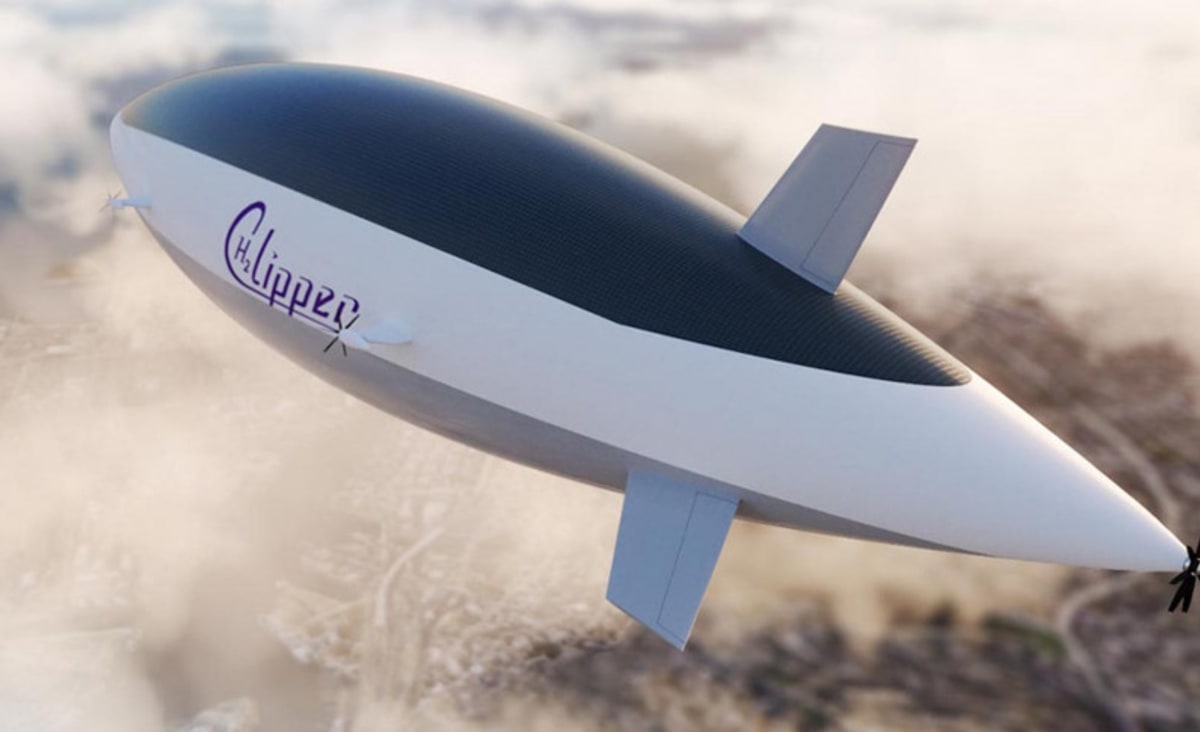
interestingengineering.com
Hydrogen Airships Promise Zero Emissions at Quarter the Price of Plane Cargo
They could be "critical in the fight against climate change."
Science & Tech
A California-based startup called H2 Clipper wants to resurrect the hydrogen-filled airship as a form of mass transport. The key difference is that it won't be transporting people, it will be transporting cargo, a press statement reveals.
The company aims to kickstart a green global cargo network by leveraging the world's renewed willingness to try alternative forms of transport following the IPCC's dire climate change report for 2021.
H2 Clipper claims its cargo airships can carry 8-10 times the payload of the best cargo plane over 6,000 miles (9,656 km), and it can do so at a quarter of the price. They will have a payload capacity of approximately 340,000 lb (150,000 kg) sitting in up to 265,000 cubic feet (7,530 cubic meters) of cargo space.
As for speed, the H2 Clipper would travel at a cruising speed of 175 mph (282 km/h), meaning it would move close to ten times faster than a cargo ship — though it would obviously lag behind a cargo plane in that department. The main advantage over today's cargo planes is that the H2 Clipper produces zero carbon emissions.
Removing the need for large ground infrastructure
H2 Clipper's airships will run on hydrogen gas through a fuel cell with all-electric propulsion systems. As NewAtlas points out, their range of over 6,000 miles (~9,650 km) means that they can connect any two points on the globe with only one refuel stop.
As for transport costs, H2 Clipper says prices will range between $0.177 to $0.247 a ton per mile for distances between 1,000-6,000 miles (~1,610-9,650 km). That's a quarter of the price of aircraft cargo transportation, according to the company. While that is more expensive than cargo shipping, the shipping industry will likely be levied with heavy carbon taxes in the coming years as governments aim to cut down emissions.
























































